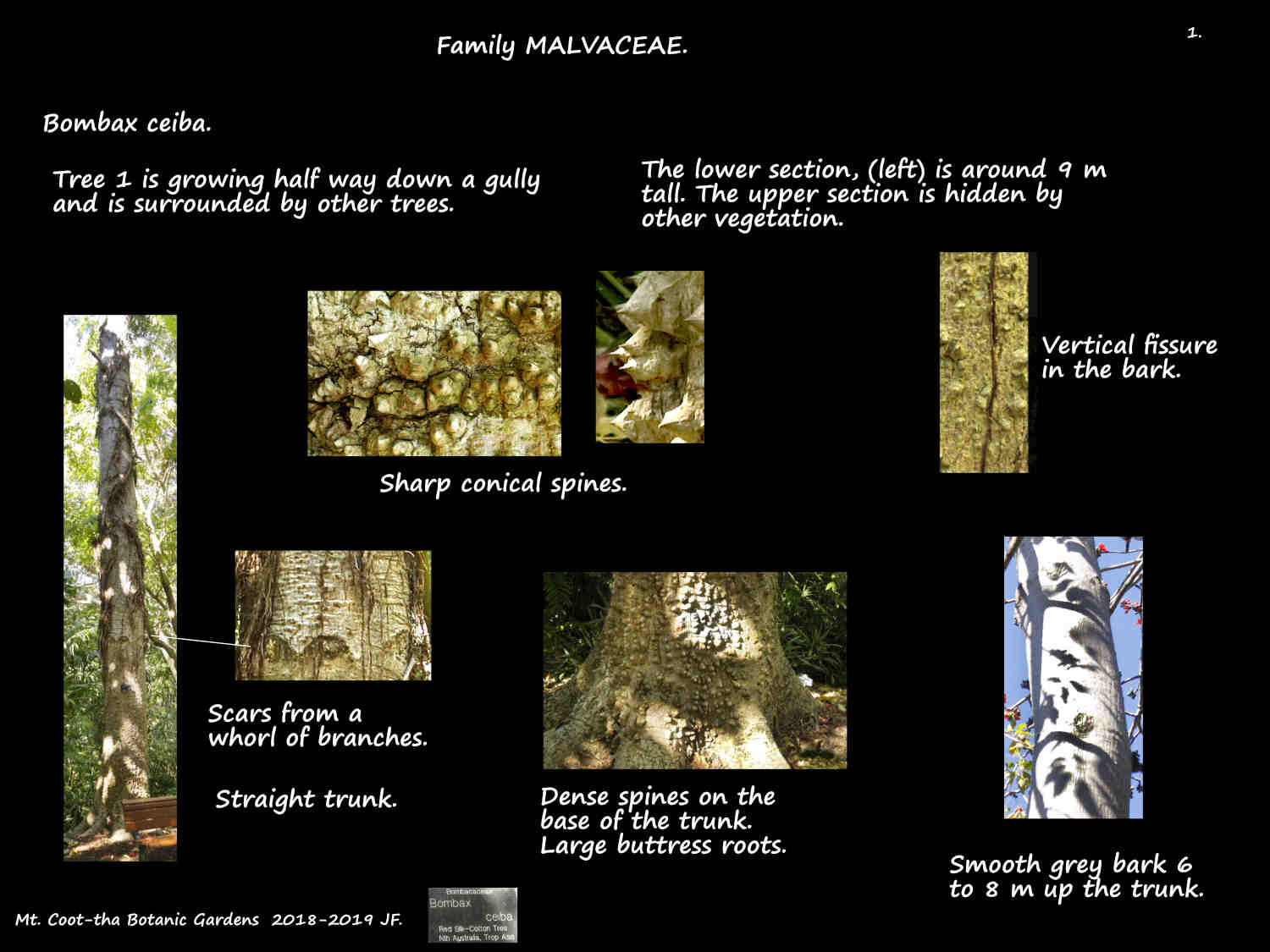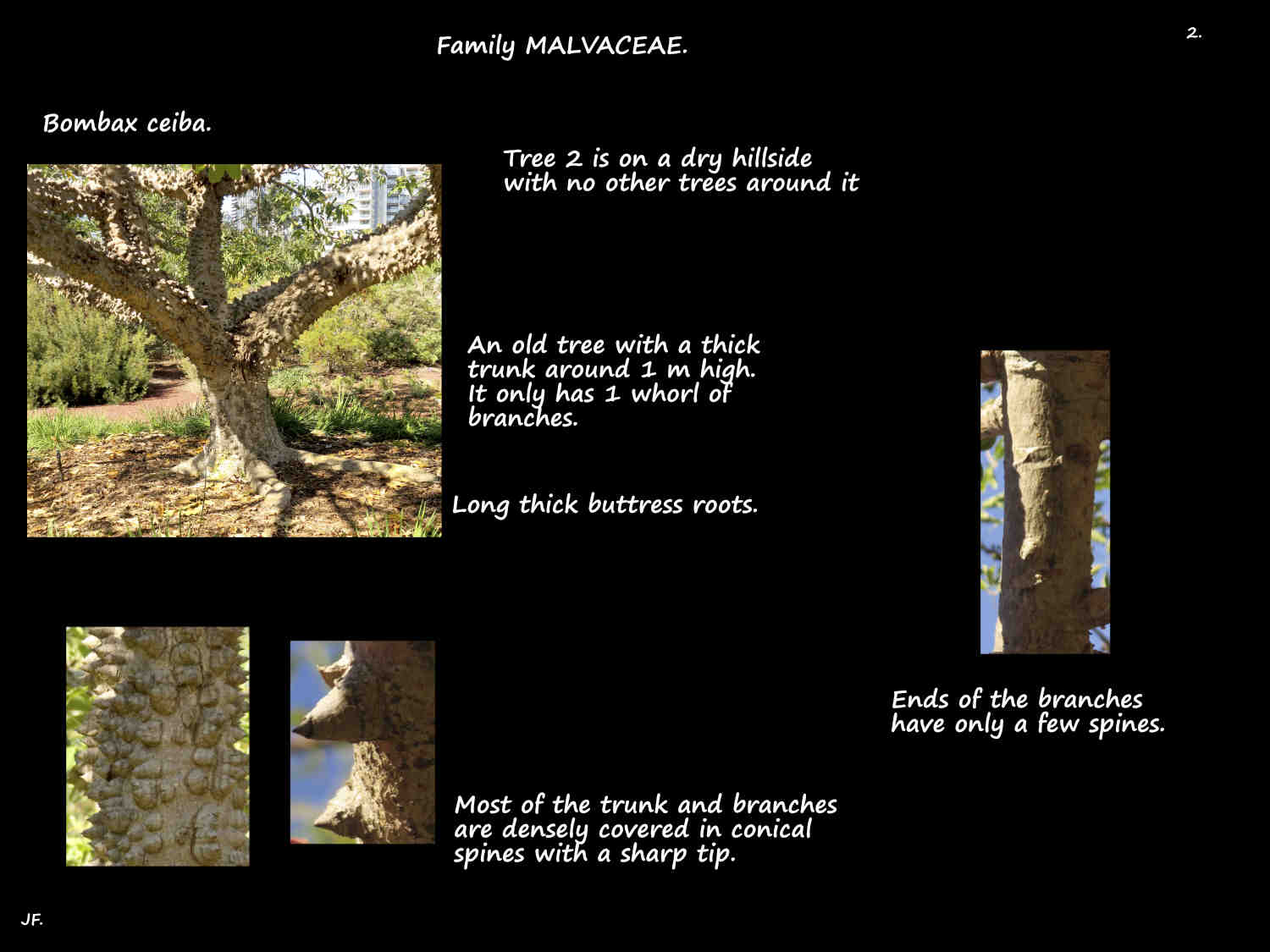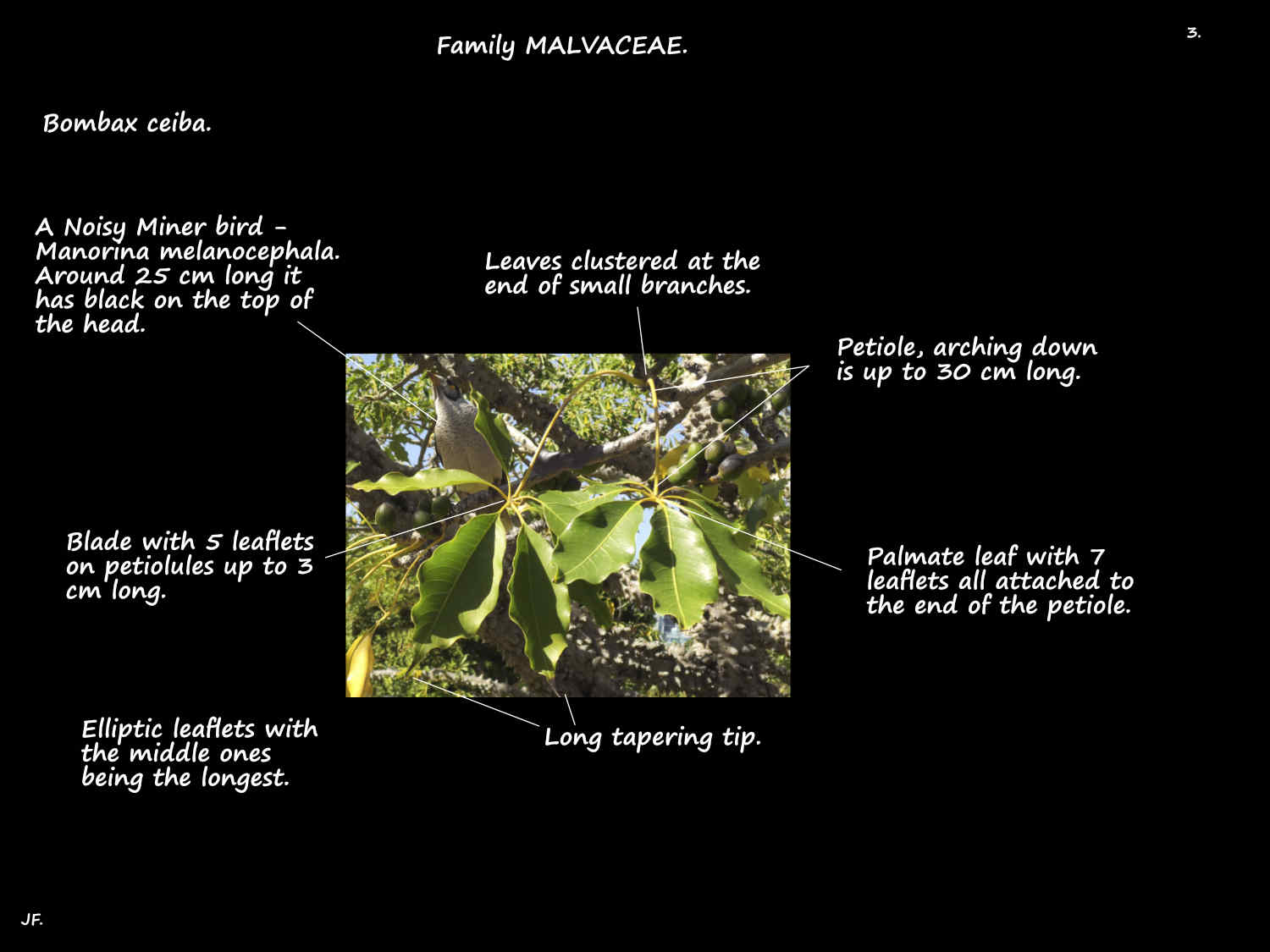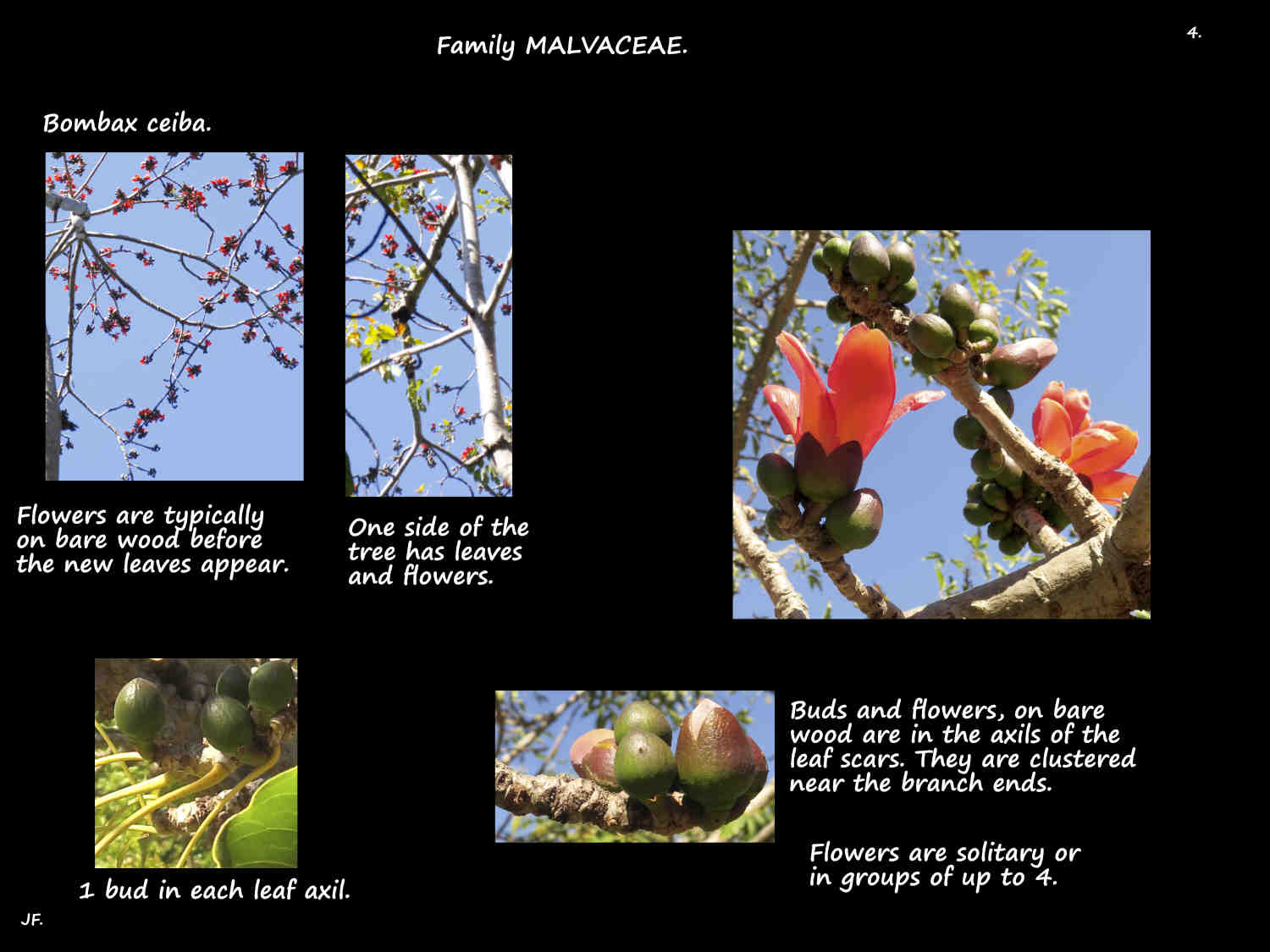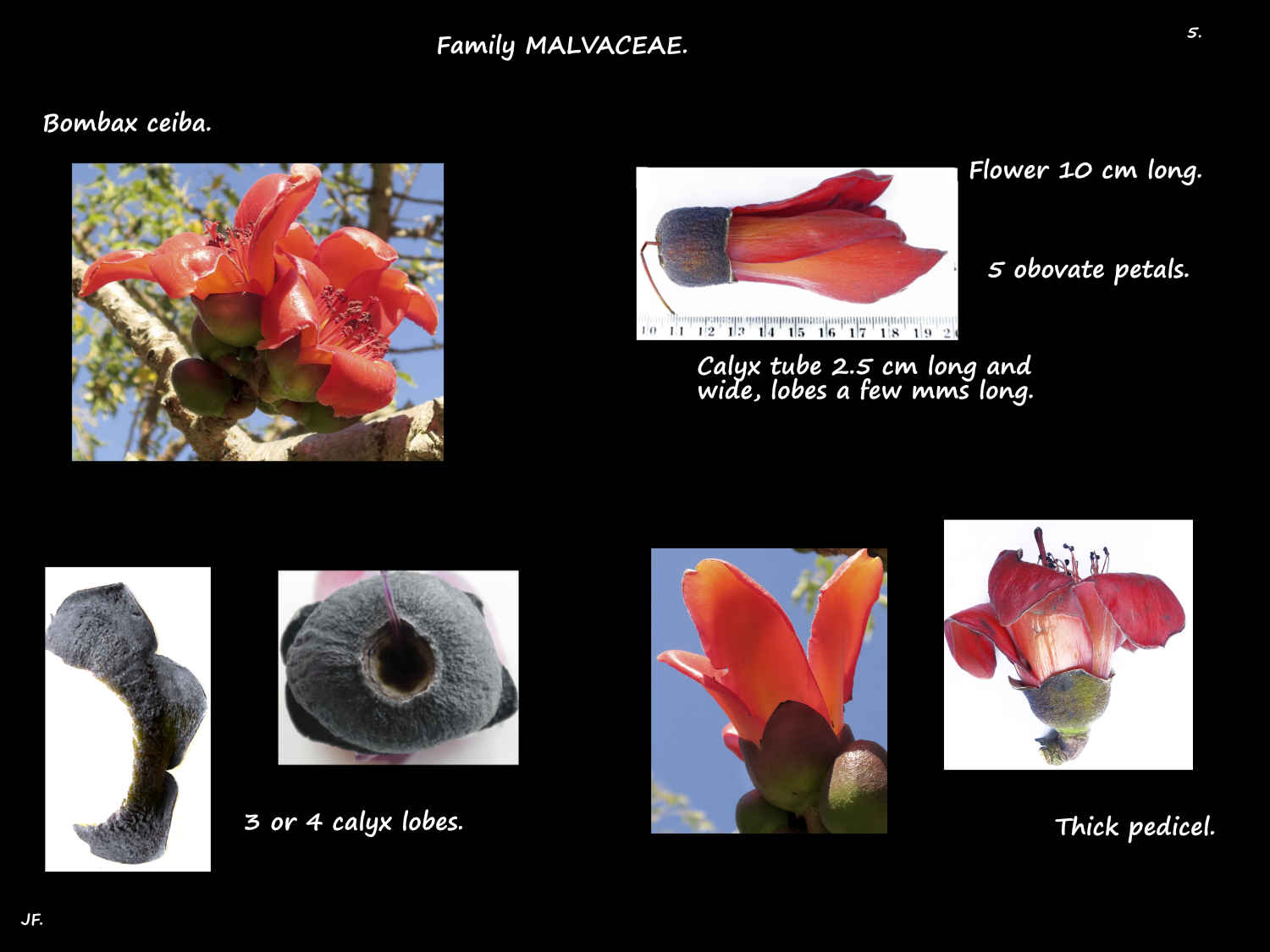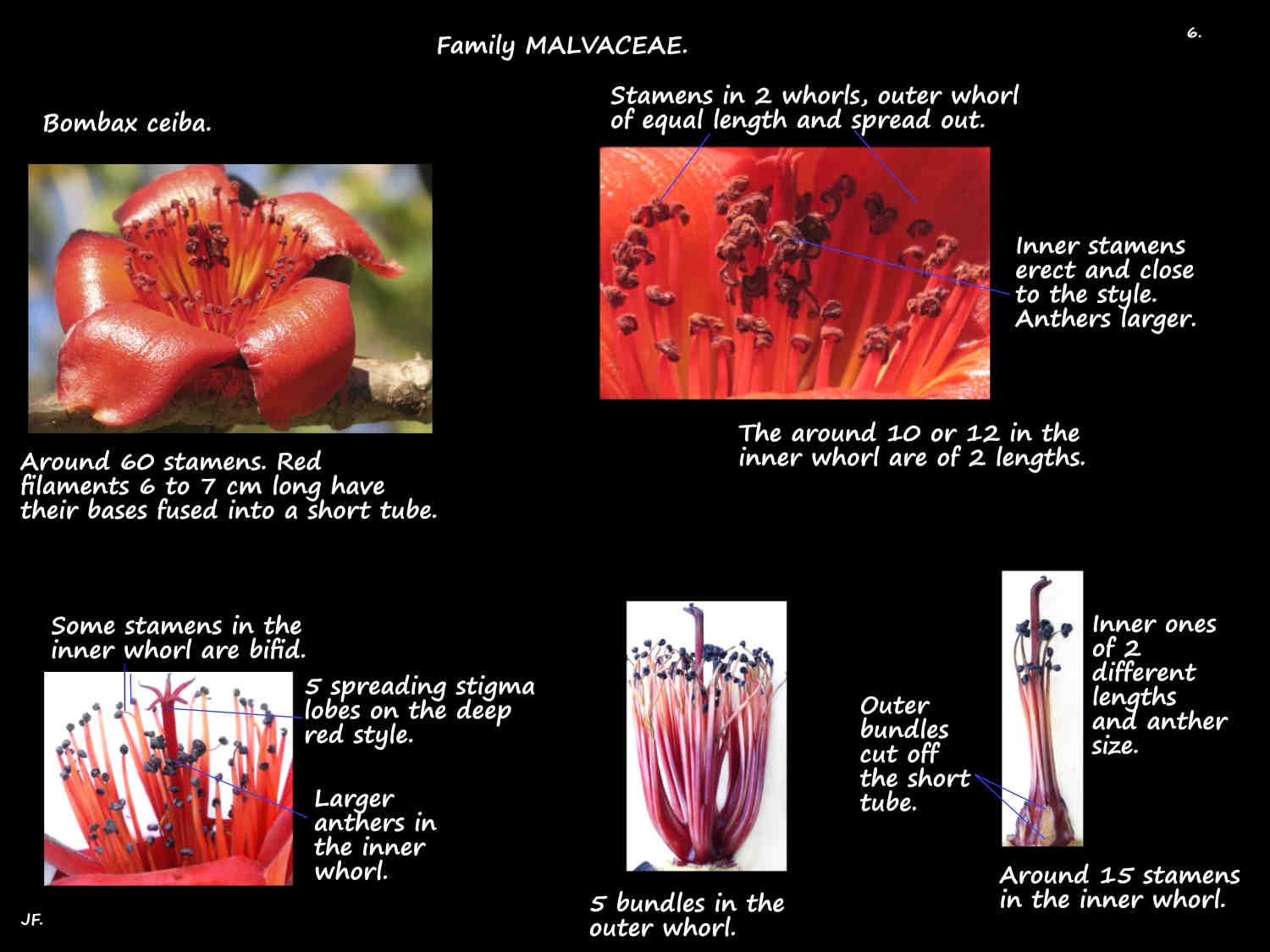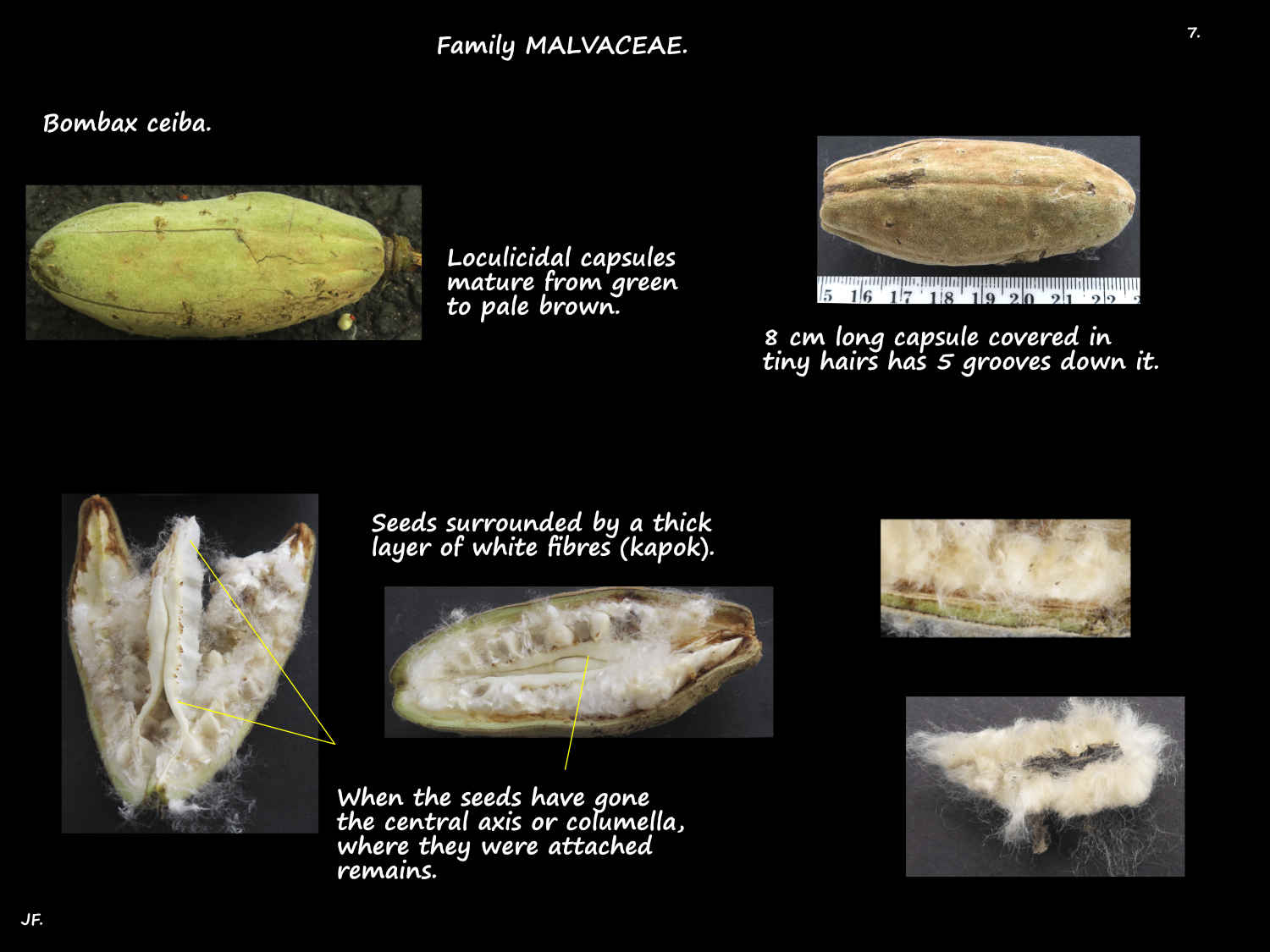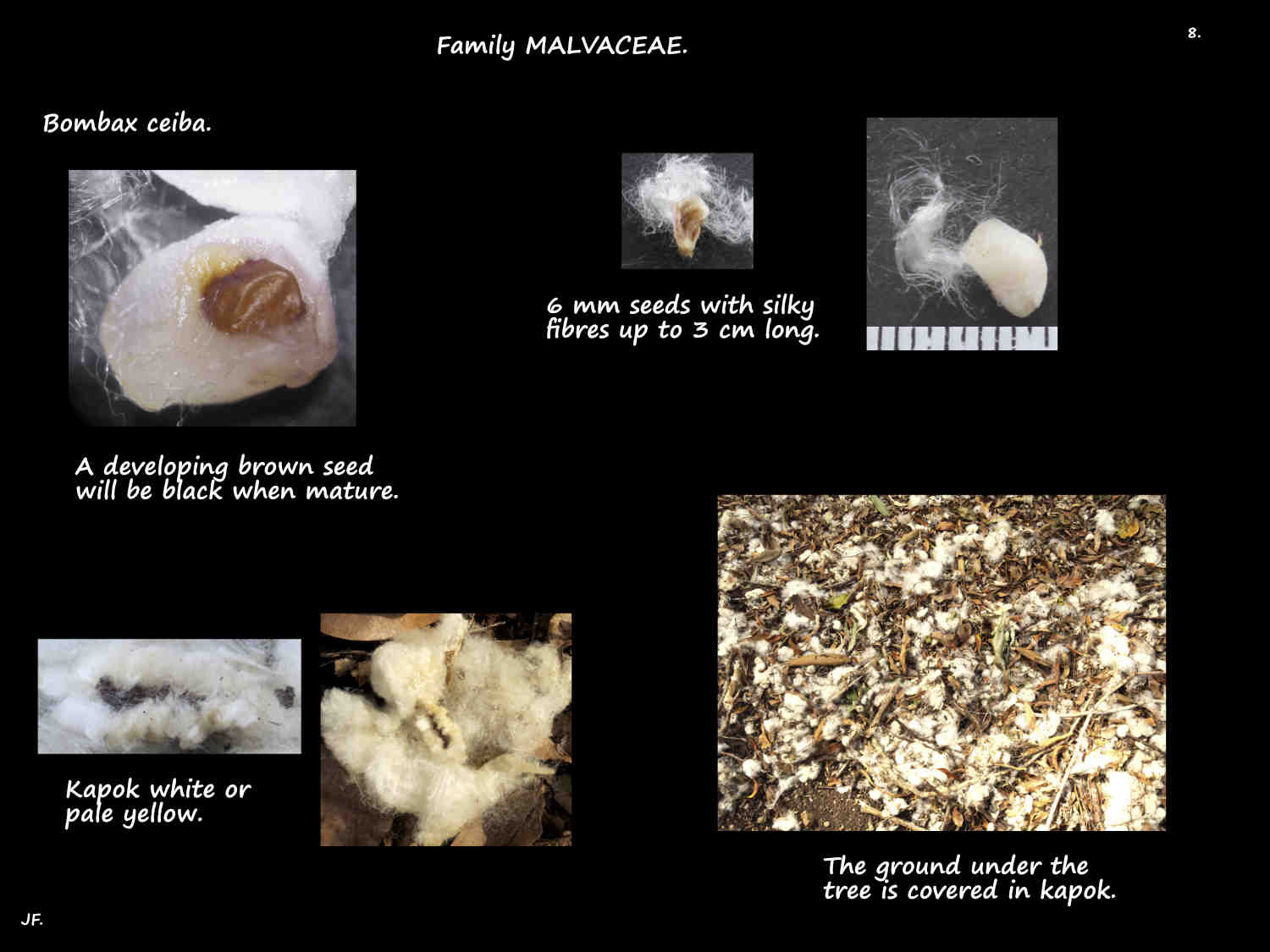The Kapok tree is from the Northern Territory, Cape York Peninsula and tropical Asia.
Mature trees are often seen around 20 to 30 m high.
In their native environment they can be 50 or 60 m.
The straight trunks, up to 2 m thick near the base have prominent buttress roots.
The almost horizontal side branches are in whorls.
There are dense large conical spines on the trunk and branches.
They are most prominent on young trees but may gradually wear off.
Areas with no spines have pale grey bark.
On older areas the bark may show vertical slits.
The leaves are clustered near the ends of the small branches.
Arching down they have a petiole 20 to 30 cm long with a swollen base.
Deciduous stipules, up to 1 cm long have a pointed tip and hairs on the edge.
The palmate blade is as long as the petiole.
There are 5 to 7 slightly leathery leaflets radiating from the end of the petiole.
Leaflets are on a stalk (petiolule) from 1 to around 3 cm long.
The leaflets are of unequal length with the middle ones being the longest.
The outer leaflets are around 5 to 10 cm long and 2 to 3 cm wide.
The central ones are 15 to 20 cm long and 6 to 8 cm wide.
Leaflets are elliptic to lance-shaped with a long narrow tapering tip.
The midrib and side veins are prominent on the lower surface.
Leaves fall in the colder months and flowers appear on the bare branches.
Inflorescences are in the axils of the leaf scars.
They are near the ends of branches where some may appear to be terminal.
Inflorescences can be a solitary flower or a cluster of up to 4.
Flowers, 10 to 14 cm wide are on a thick pedicel 1 to 2 cm long.
The calyx is 4 to 5 cm long and 2 to 3 cm wide.
It has a cup-shaped base with 3 (4 or 5) unequal lobes.
The inner surface has dense soft hairs.
The 5 elliptic to obovate petals are 8 to 10 or 12 cm long and 3 to 4 cm wide.
The initially erect petals curve back.
They have soft matted stellate hairs on the outer surface and a few on the inner.
They are typically a bright red but may be orange to yellow.
There are up to around 75 stamens with red filaments 6 to 7 cm long.
On a short tube of fused filament bases they are arranged in 2 whorls.
Most are in the outer whorl and they are grouped into 5 bundles of 12 or more.
These curve outwards and have small dorsifixed anthers.
The dark purplish-black kidney-shaped anthers curl up.
The inner whorl has 10 to 15 stamens.
Of unequal length they are erect and lie close around the ovary and style.
Some are bifid with 2 anthers on 1 filament.
The conical superior ovary consists of 5 fused carpels.
Up to 2 cm long the outer surface has 5 grooves running down it.
It is covered with tiny silky white hairs.
The single red style, up to 9 cm long extends past the stamens.
The 5 red stigma lobes are erect then spread out.
Flowers produce a lot of nectar.
Fruit are a pale green then brown ellipsoid to oblong loculicidal capsule.
Up to 15 cm long and 5 cm wide it is covered in pale silky stellate hairs.
The numerous dark brown or black ovoid seeds are surrounded by silky fibres.
The white or pale yellow fibres are a few cms long.
The cellulose fibres, known a kapok cover the ground under the trees.
J.F.

